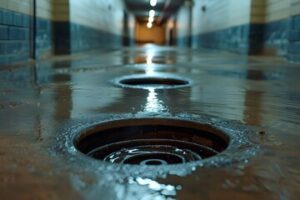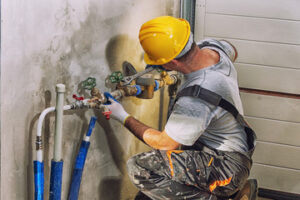Properly handling and disposing of liquid waste has a huge impact on the environment, public safety, and infrastructure. Spills and contamination can occur if proper disposal practices are not followed, resulting in fines and legal actions against businesses or individuals. Connect with Liquid Waste Disposal Perth for reliable help.

There are specific regulations for generating, storing, transporting, treating, and disposing of liquid waste. This article will cover the basics of liquid waste disposal methods to help businesses and individuals understand what they need to do.
Any undesired, surplus, or disposed-of material that manifests in liquid form is considered liquid waste. It may be produced during a manufacturing process or simply as a byproduct of normal business operations. Regardless of the cause, it is important to take care of all liquid waste as quickly as possible to avoid environmental contamination and health risks.
Businesses need to separate non-hazardous and hazardous liquid waste, classifying it based on its potential threat level, and selecting treatment and disposal methods that abide by regulations. Using a liquid waste management system helps reduce the risk of spills, leaks, and other hazards. This allows companies to protect the environment and human health while reducing costs and ensuring regulatory compliance.
Whether your company produces industrial materials, beauty products, or food and beverage items, you are likely to generate liquid waste. Almost every type of manufacturing process creates it, as does everyday business operations like cleaning containers and tanks. Liquid waste can also come from residential areas, including sanitary sewage and household wastewater from bathing, laundry, and other activities.
All liquid waste can be harmful in some way, either affecting pipelines and sewers or causing damage to the environment or humans. In addition, many types of liquid waste are toxic or corrosive and require special handling. Luckily, there are solutions for all of these types of liquid waste.
Liquid waste is often difficult to transport, requiring specific equipment and vehicles that are safe for this purpose. In addition, it is important to properly label all waste containers. Clearly marking them as containing hazardous or non-hazardous liquid waste helps to prevent accidental misuse and reduce the risk of spills or contamination.
Taking proper care of liquid waste not only protects the environment but also reduces operating costs and ensures that you are in compliance with all local and federal regulations. This is why it’s important to consult with an experienced waste management service when deciding on the best method for managing your company’s unwanted substances. With the right knowledge and support, you can ensure that your unwanted substances don’t end up harming the environment or contaminating your water supply.
Types of Liquid Waste
Liquid wastes include a wide variety of substances, from everyday kitchen waste to industrial chemicals. Each requires special handling, because they can contaminate water sources or harm human and animal health. In addition, liquid wastes are more difficult to dispose of than solid garbage, since they often spill or leach. These issues make proper disposal a vital part of any business that produces or handles these wastes.
Companies that produce a lot of liquid waste should contract with professional services to manage this. These services can help them separate non-hazardous and hazardous waste from each other and comply with local regulations. They can also ensure that all liquid waste is disposed of properly, ensuring that the environment and public health are protected.
The main types of liquid waste are sewage, oily wastewater and sludge from factories. Sewage includes human waste and other organic material from toilets. It’s often rich in chemicals and heavy metals, which can be dangerous for humans and the environment. Oily wastewater is liquid byproduct from industrial activities, such as production of fuels and chemicals. It contains lubricants, cleaning agents and other chemical byproducts.
Sludge is a thick, dark liquid substance that’s produced by industrial activity. It contains a mixture of organic and inorganic material that’s hard to break down and is usually stored in pits or lagoons. Some sludge is biodegradable, while some isn’t. The latter is often corrosive, toxic and flammable, making it dangerous to the environment.
Another type of liquid waste is leachate, which is polluted rainwater that seeps from landfills and other disposal facilities. This water can contaminate groundwater and subterranean infrastructure, and it can seep into soil, killing plants and poisoning animals and humans. It can even cause illnesses in humans, such as gastrointestinal problems or heavy metal poisoning.
The main goals of any liquid waste management program are to protect the environment, human health and infrastructure. This is achieved by separating non-hazardous and hazardous waste from one another, using safe storage methods, treating the waste to reduce its harmful properties, and ensuring that all disposal methods abide by relevant regulations.
Treatment
In the absence of proper disposal methods, liquid waste can negatively impact human health, water supply, and the environment. Liquid waste can also be a fire risk due to its highly flammable and reactive properties. Therefore, liquid waste management involves a number of steps including: separating non-hazardous and hazardous liquids, treating the waste before reuse or disposal, and complying with regulations.
The first step in liquid waste treatment is characterization. This process involves testing the waste to identify its chemical composition and properties, as well as its contaminant levels. This information helps ensure that the liquid waste is treated in ways that are safe for the environment and for people to handle.
Once the liquid waste is characterized, it can be processed in a variety of ways. For example, it might be disinfected with chemicals like chlorine or ultraviolet radiation to kill any pathogens that could affect human and animal health. It may also be subjected to biological treatments where microorganisms break down organic pollutants. Other processing techniques include solidification, which turns the liquid waste into a more manageable and stable form. This makes it less likely for hazardous materials to leak out of the waste material and into the surrounding environment.
Another option is to use a biological process called anaerobic digestion, which decomposes the liquid waste to produce methane and other harmless gases that can be used for energy. However, this method can be difficult to manage in large scale, and it requires significant investment to set up and operate.
Lastly, some liquid waste can be treated and then reused for non-potable purposes. For example, greywater can be used for irrigation and flushing toilets if it is disinfected before being released into the environment. It can also be used as a nutrient source for soil.
The most common way to dispose of liquid waste is by sending it to an authorized facility that is equipped to handle it. Some of the most common facilities for this type of waste include wastewater treatment plants, recycling centers, and landfills. This is often the most cost-effective option, especially for businesses that generate a large amount of non-hazardous liquid waste.
Disposal
Businesses and households generate staggering amounts of liquid waste, from harmless wastewater to toxic industrial byproducts. If this waste is not properly contained or disposed of, it can leak into waterways and groundwater aquifers, contaminating the environment and damaging natural habitats and public health. The safe storage and disposal of liquid waste requires a multi-step process, including screening, treatment, containment, transport, and landfilling.
To start, it’s important to identify the type of liquid waste you’re dealing with. For example, sanitary sewage contains human waste and wash water from the toilet, bathtub, laundry, and kitchen sinks. This sewage typically contains a high concentration of bacteria and heavy metals, so it needs to be handled with extreme care. Other types of liquid waste include corrosive chemicals and solvents, which often need more rigorous treatment processes like chemical neutralization or chemical precipitation to remove impurities.
It’s also vital to consider the location of your liquid waste disposal site. If the waste site is too close to well water sources, the contaminated runoff could seep into the groundwater and contaminate people’s drinking water. Similarly, surface water sources may also become polluted. This is particularly dangerous if the waste contains chemicals that are harmful to human and animal health, such as the organic solvents used in medical facilities or toxic metals from engine wear.
Liquid waste disposal sites should also be far enough away from wetlands and other environmentally sensitive areas to prevent contamination. They should be fenced and covered in a protective layer of mulch or gravel to protect the surrounding environment from any leaks or spills. Finally, it’s crucial to establish an emergency response plan for addressing any accidental waste spills. This should include trained personnel who can respond quickly to minimize damage and protect the public.
Regulatory establishments have set strict standards for the handling, transporting, treating, and disposing of liquid waste. Failing to follow these regulations can lead to serious fines and penalties. In the worst cases, your business’s permits could be revoked, effectively shutting you down. To avoid these consequences, work with a waste management company that has a strong track record of working safely with liquid waste.
